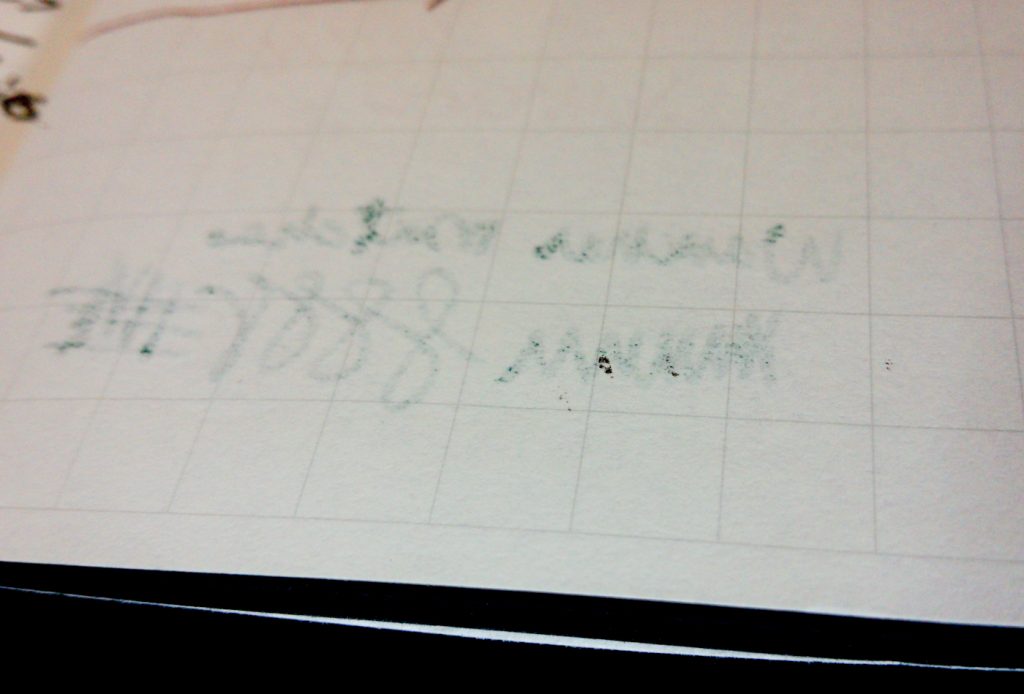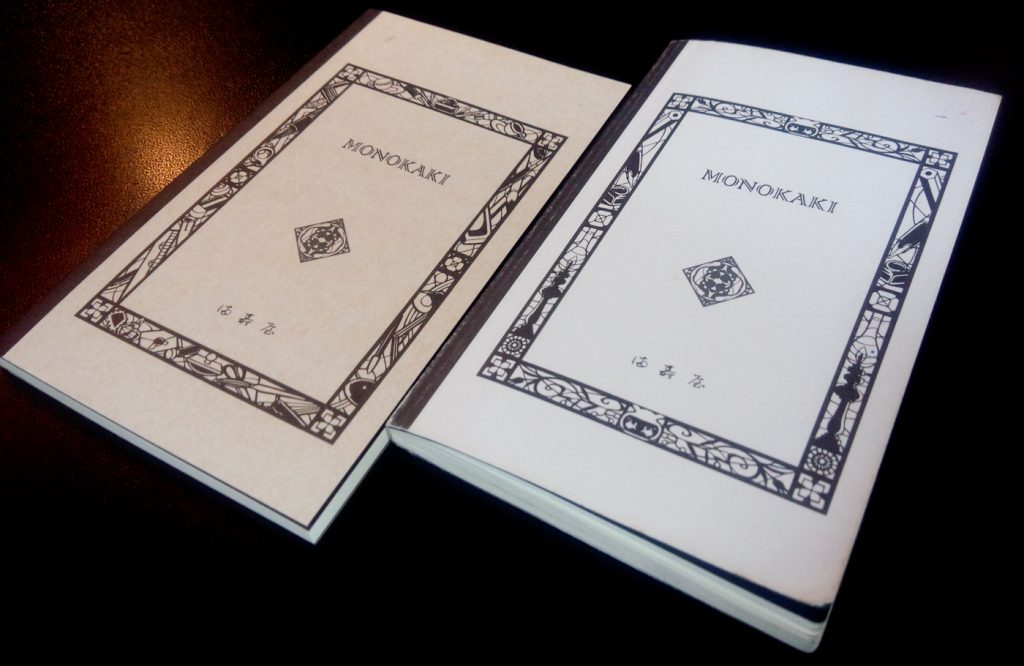Stop me if you’ve heard this one before: There’s this really cool notebook that claims that it’s the notebook of Nobel Prize winning writers.
Although the way a famous notebook brand uses this story is somewhat dodgy (and is most accurately described as “famous people used a notebook that looked kind of like this”) in the case of Masuya’s Motokaki notebook, there appears to be some truth to the story. The notebook was, as near as I can find, made in 1939 for Fumio Niwa, author of The Buddha Tree. Since then it’s been used by other Japanese writers.
Note: Please keep in mind that none of this impresses me. In fact, when I learned about the story behind the more famous notebook, I felt kind of sad, as if I’d been duped, even though I hadn’t read the story beforehand.
The Monokaki Pocket Notebook I used was terrific. It is one of the most fountain pen friendly notebooks I’ve ever used.
The notebook contains 128 pages of Masuya’s cream colored, acid free Kotobukiya paper. I used the version with a light grid, but it also comes in blank and ruled versions. The off-white cover is made of thick Japanese washi paper with a woodblock print inspired pattern designed by Ryo Takagi. The end pages are black (charcoal gray?) paper and help add some support to the notebook when you’re holding it in your hand as you write.
At 140 mm (5.5 inches) tall and 85 mm (3.35 inches) wide the notebook is roughly the same length as a Field Notes Notebook, but slightly narrower. Because it’s made of eight sewn signatures, it lays flat when it’s open, which is not true of many smaller perfect bound notebooks.

Detail of the end pages and the notebook’s construction. If you zoom you can see the individual signatures.
Although the paper is thin, it handles fountain pens extremely well. There is a lot of show through, which might bother some people, but very little bleed. In fact, the only ink that bled consistently was Wancher Matcha, which is always a heartbreaker. It breaks hearts.

Wancher Matcha bleeding through the page. It is a heartbreaker. It breaks hearts. Also, nice detail of the grid pattern.
The only real complaint I have with the notebook is more a matter of taste than a problem. As a rule, I don’t like solid grids on notebook pages as they break up the lines. Yeah, you have to look fairly close, sometimes, to notice, but it bothers me. Ruled pages I don’t mind as much because I don’t have to cross the lines, but I prefer blank pages in small notebooks. (Actually, in all notebooks, but more on that in a future post.)
The Monokaki Pocket Notebook has entered my top five pocket notebooks. I have a blank version yet to use, and I may bump it forward in my notebook queue.


